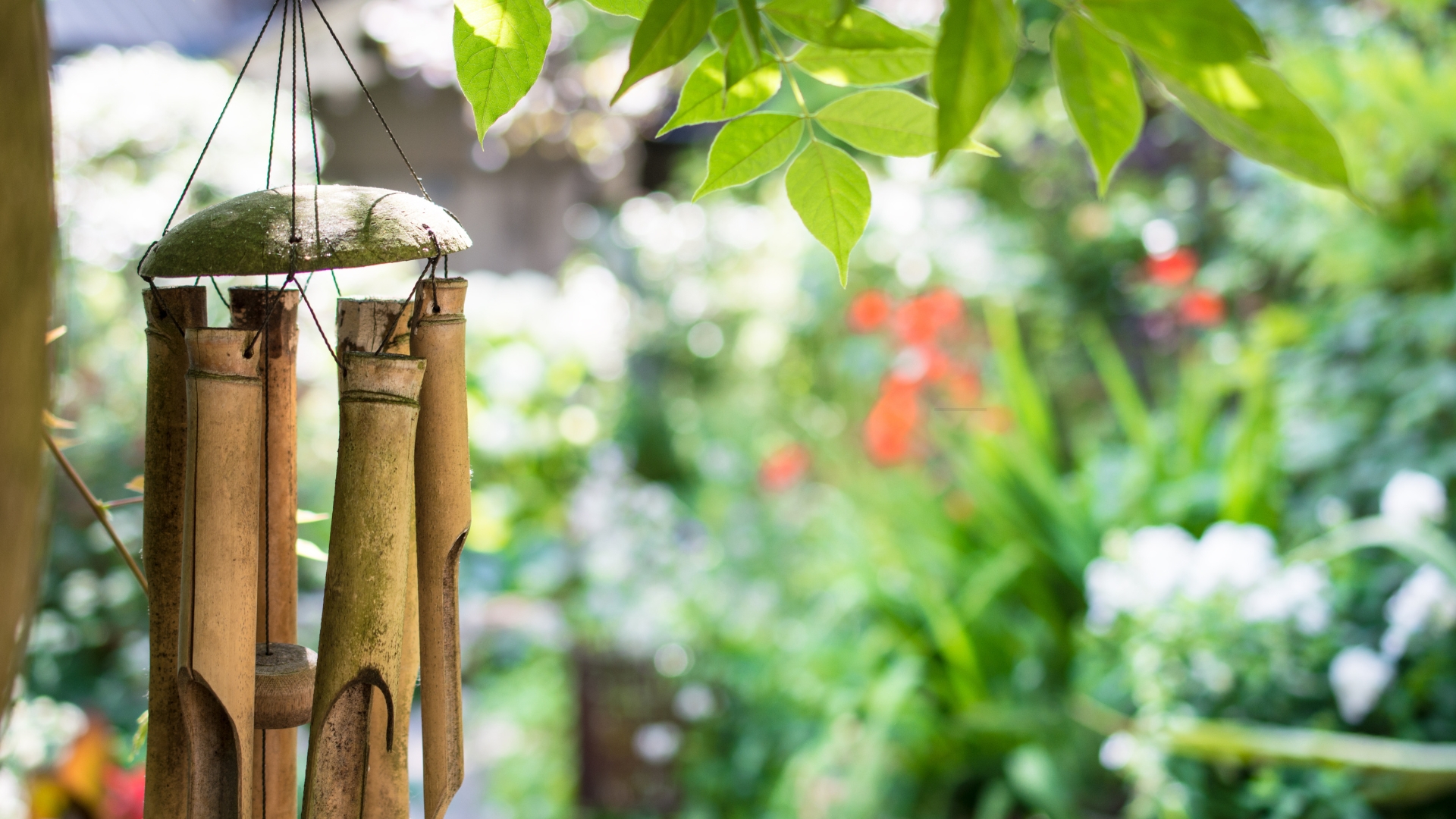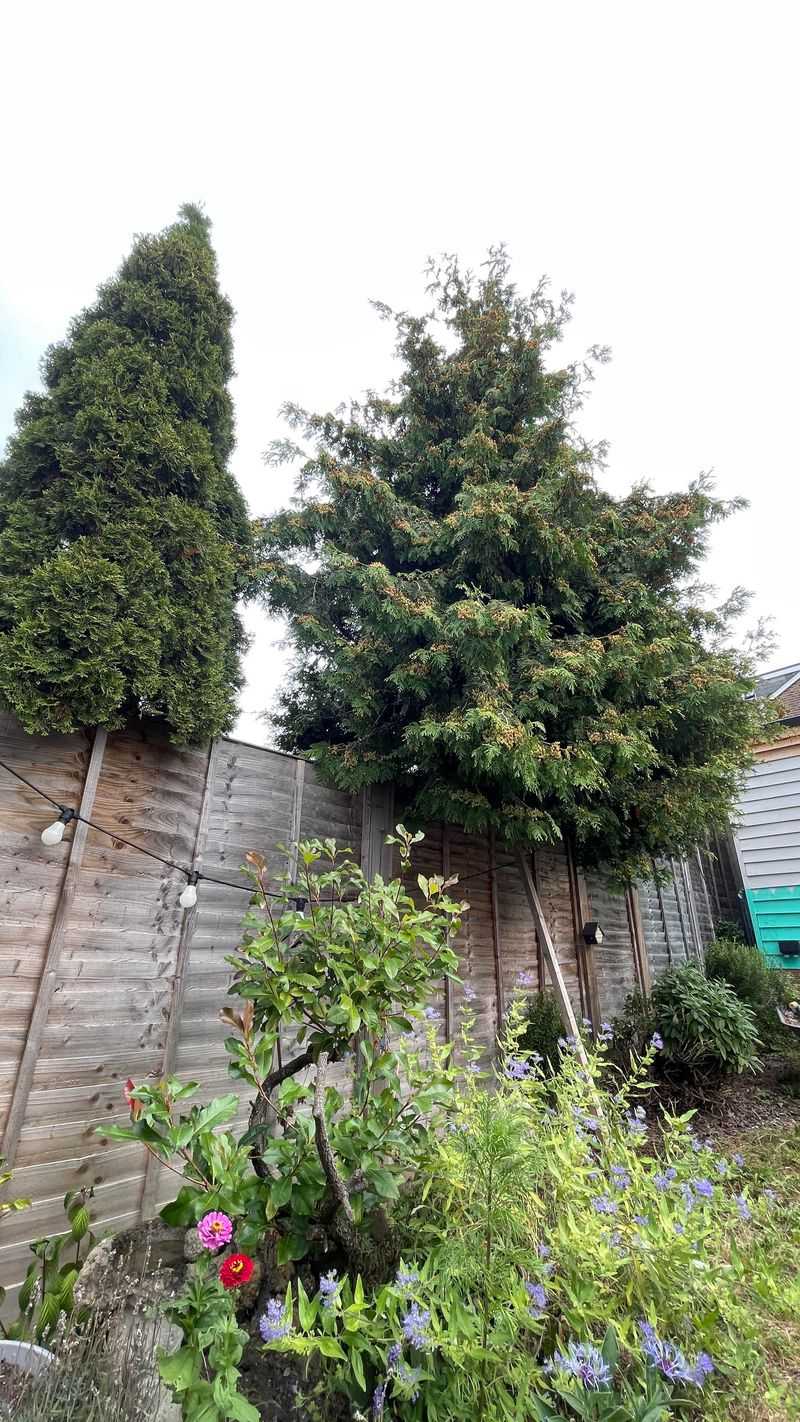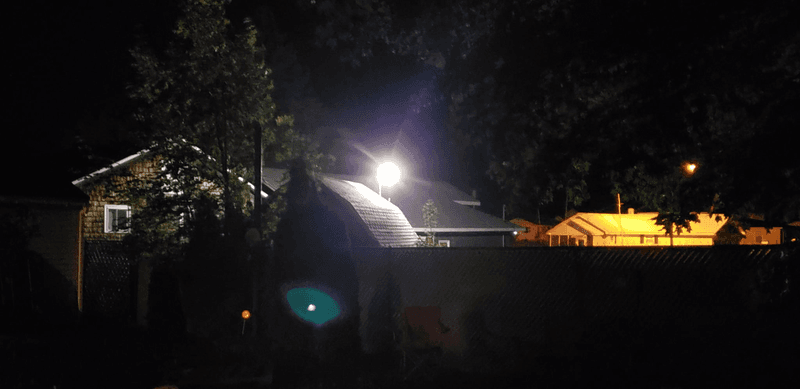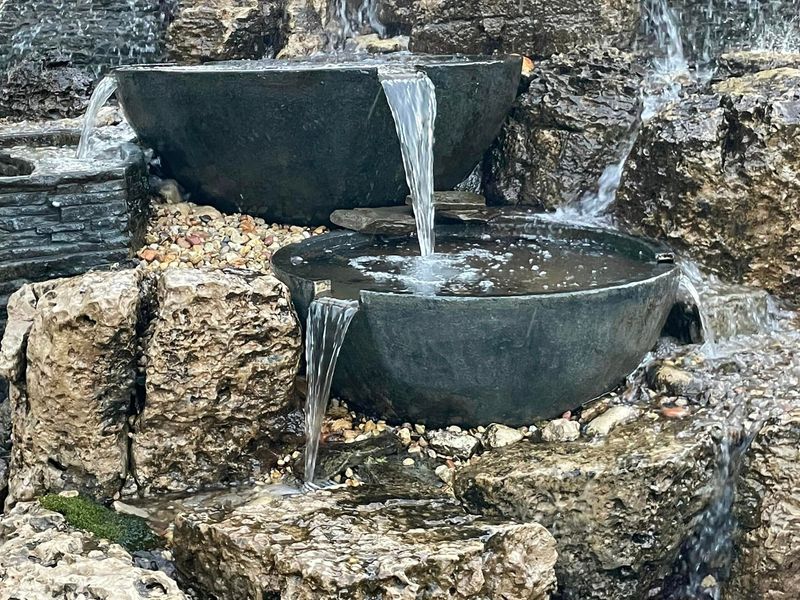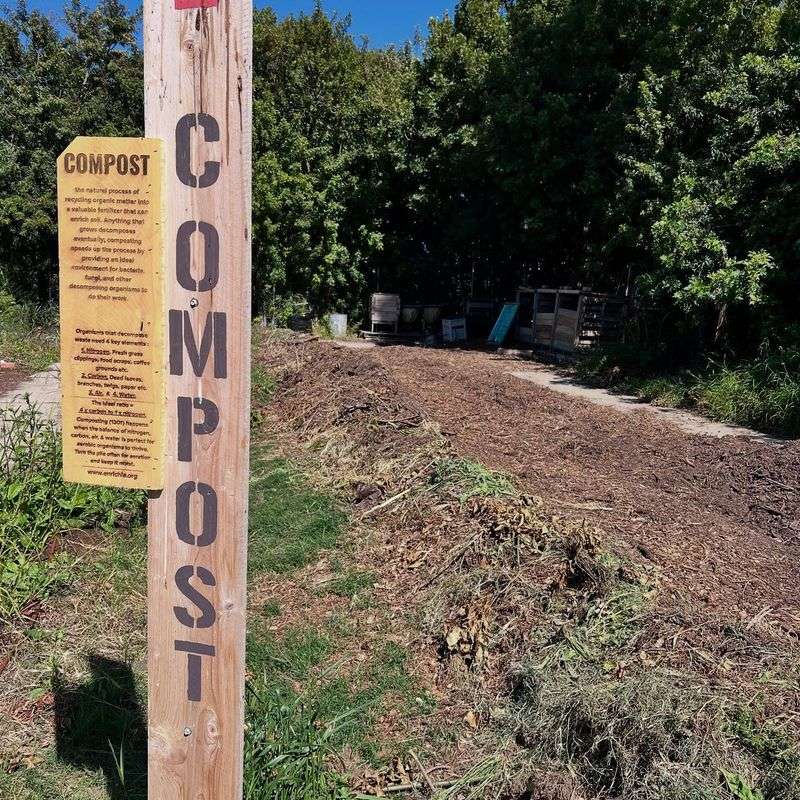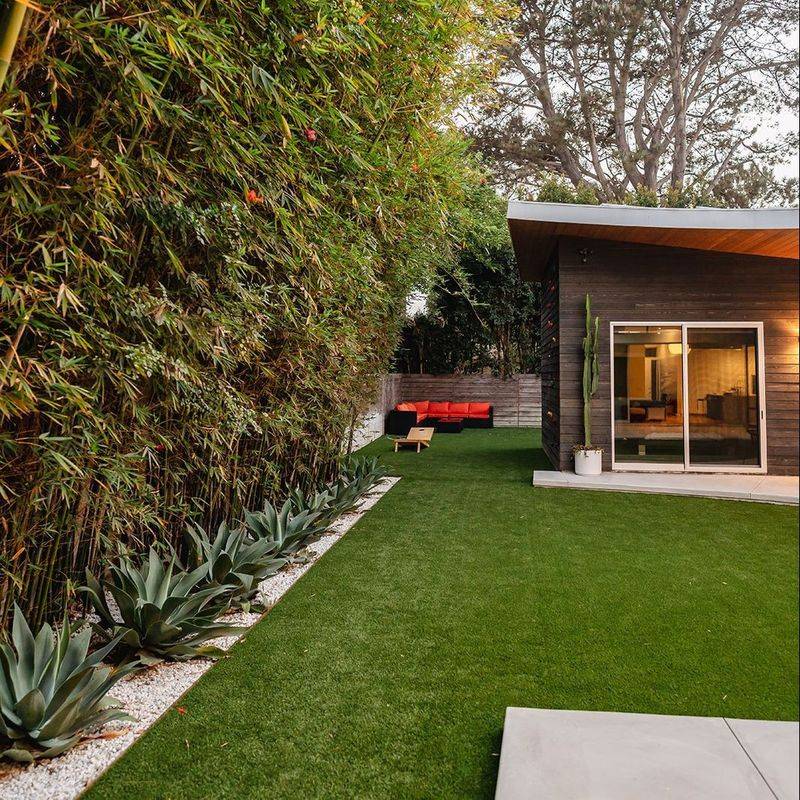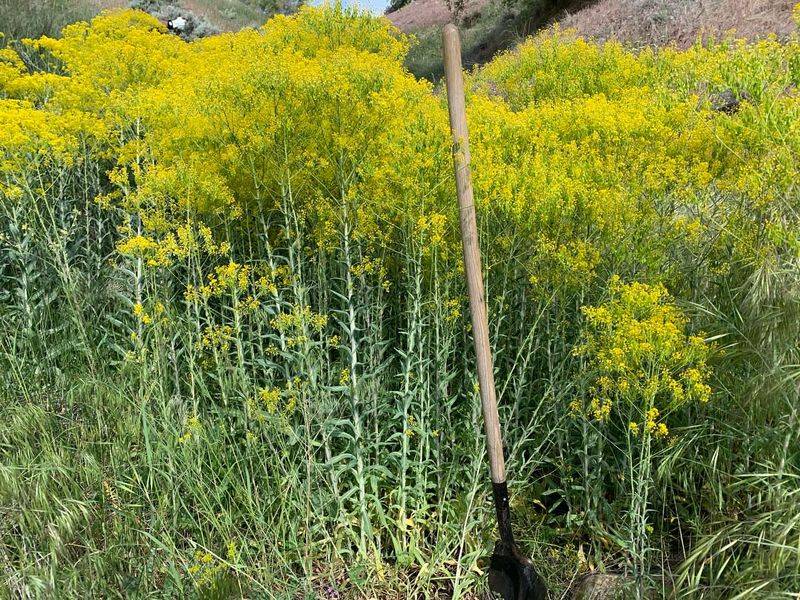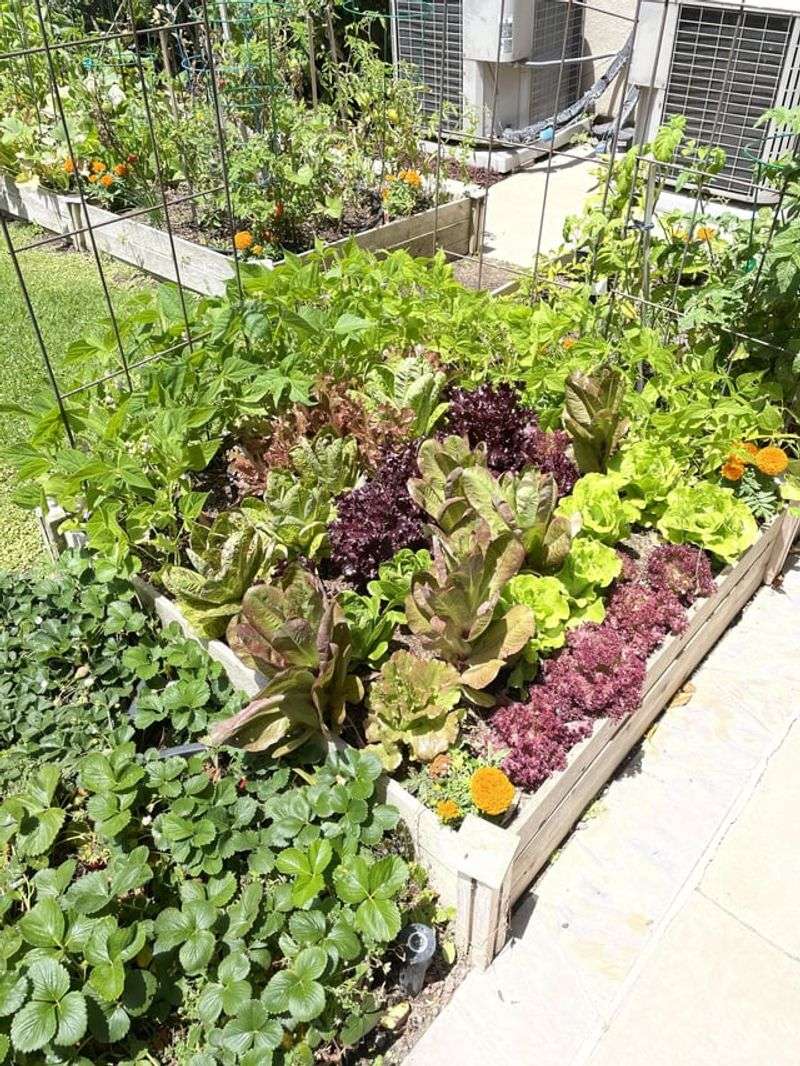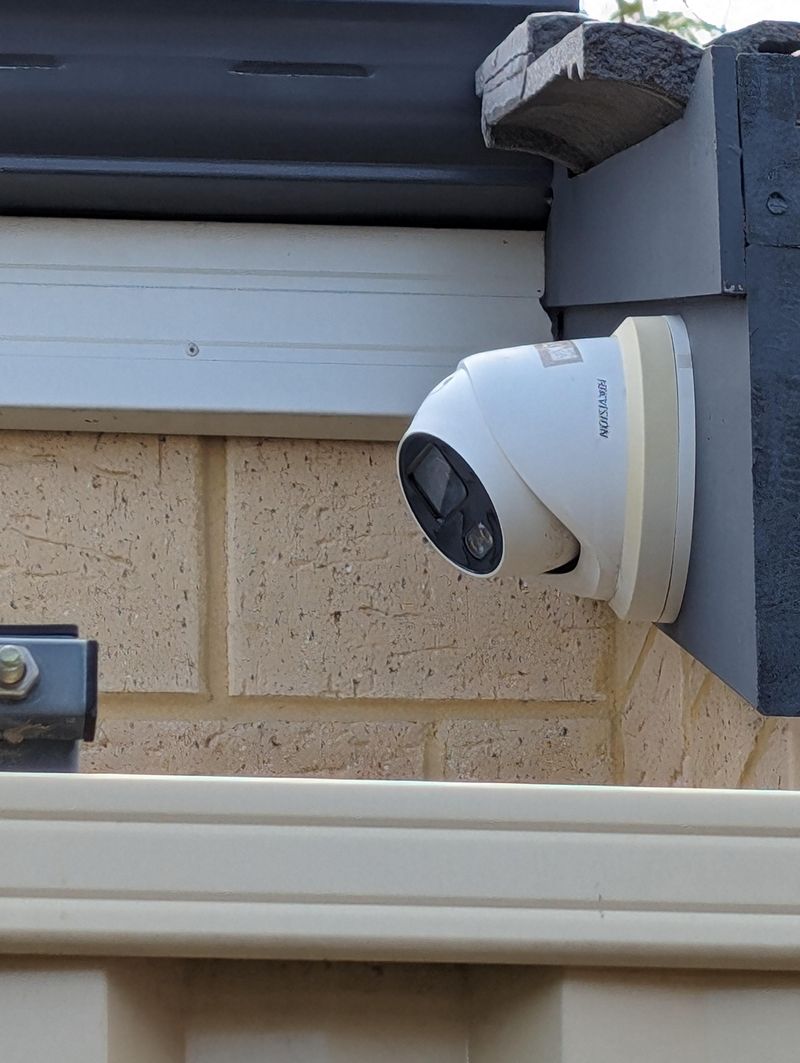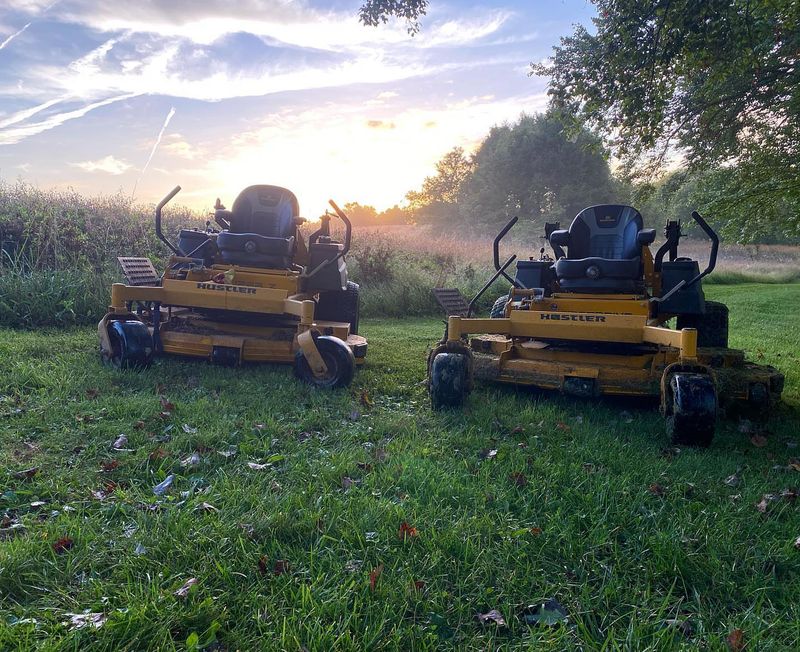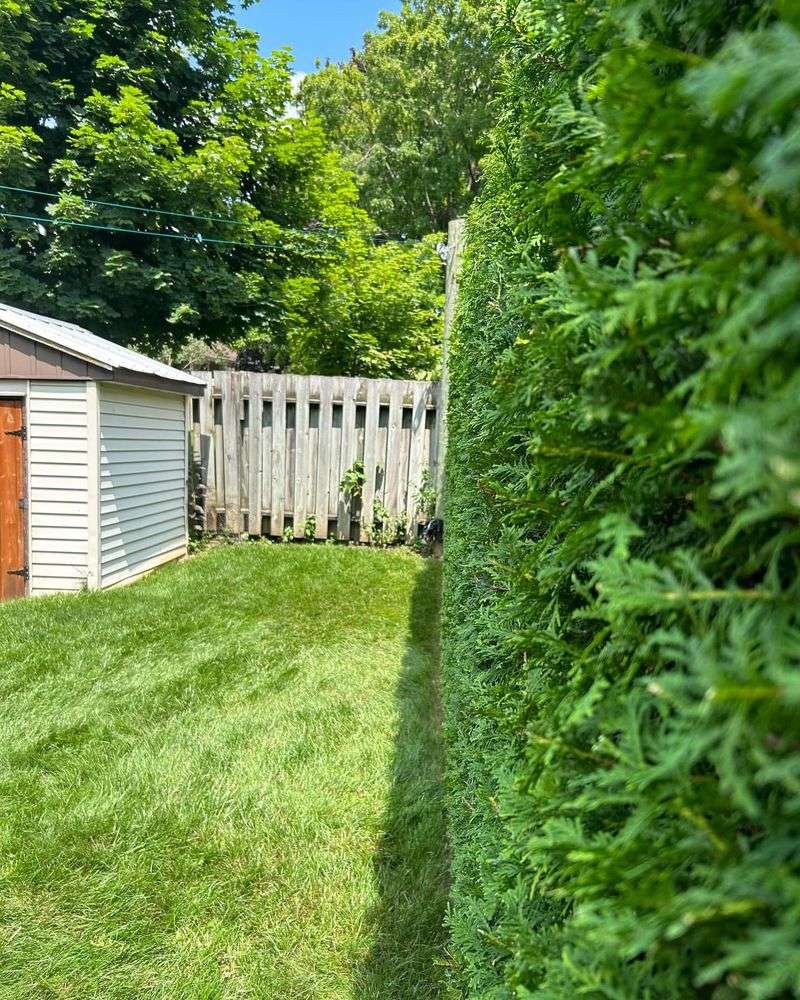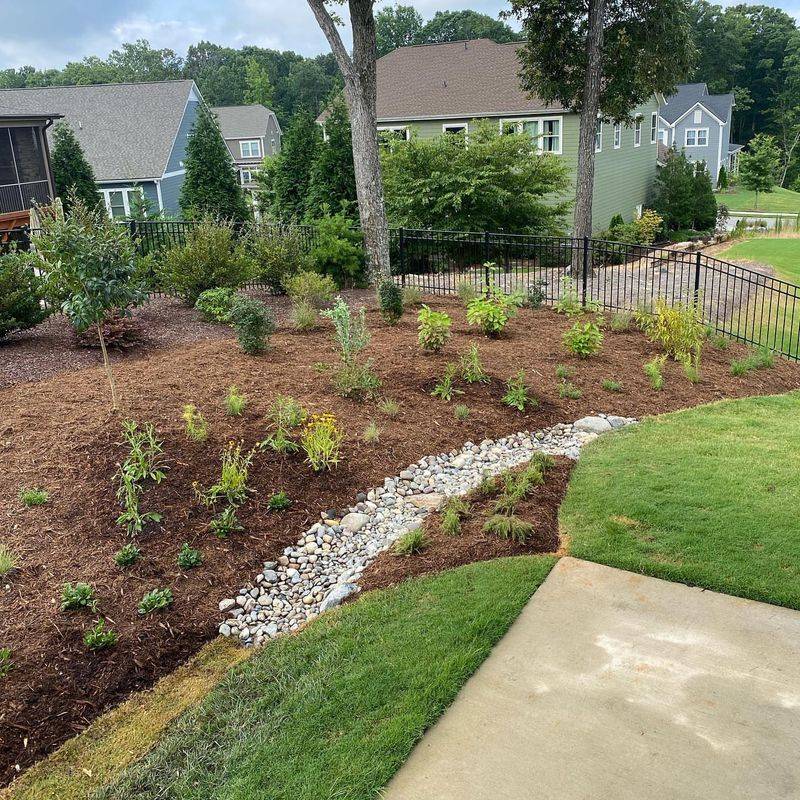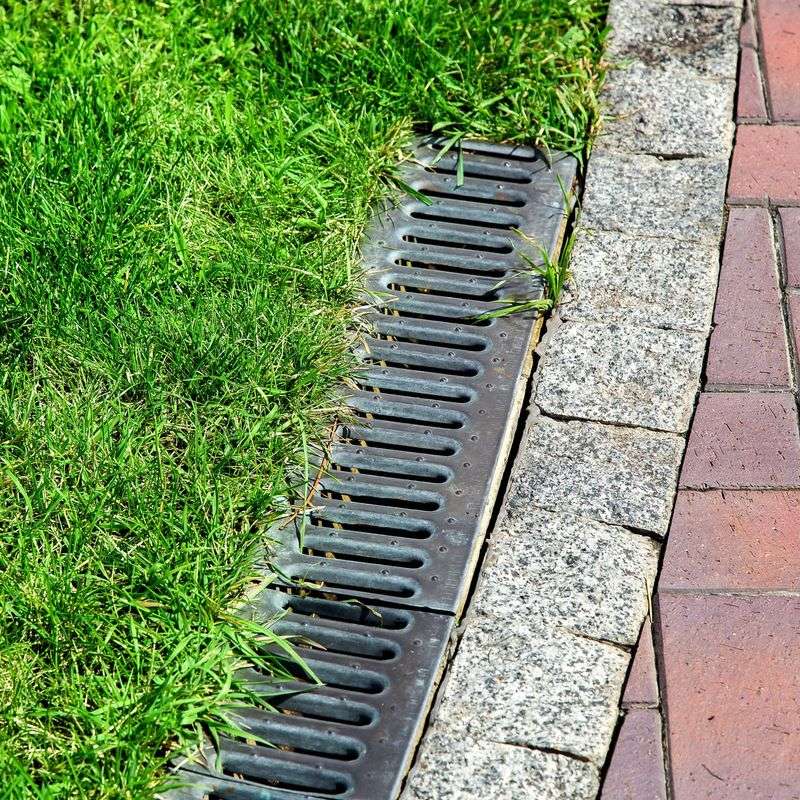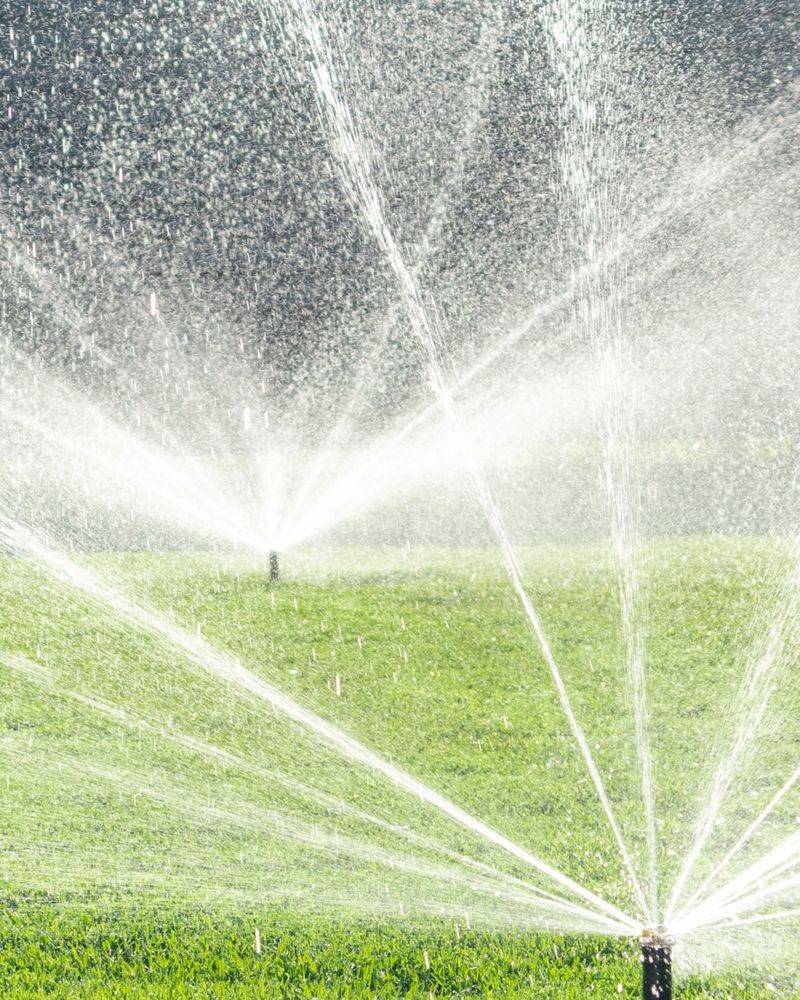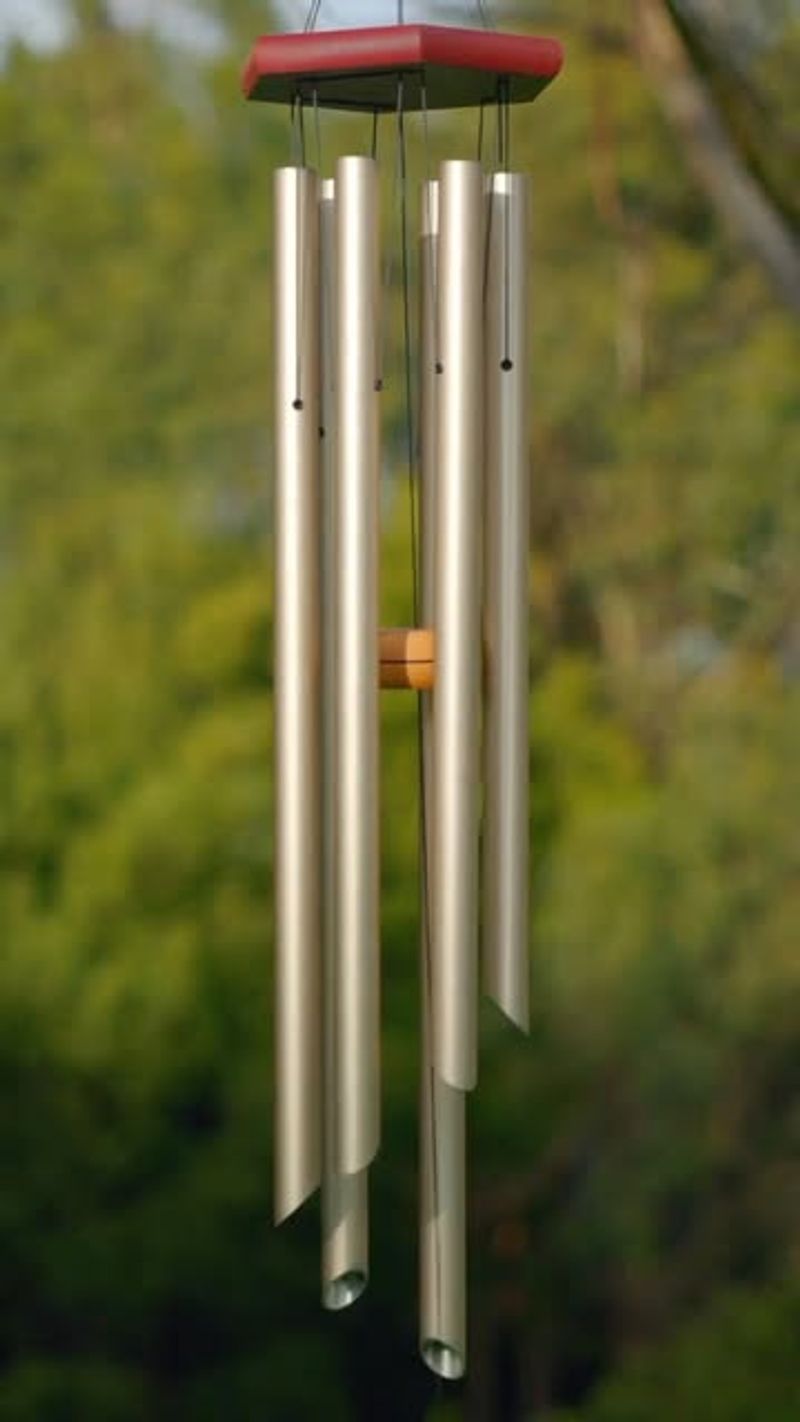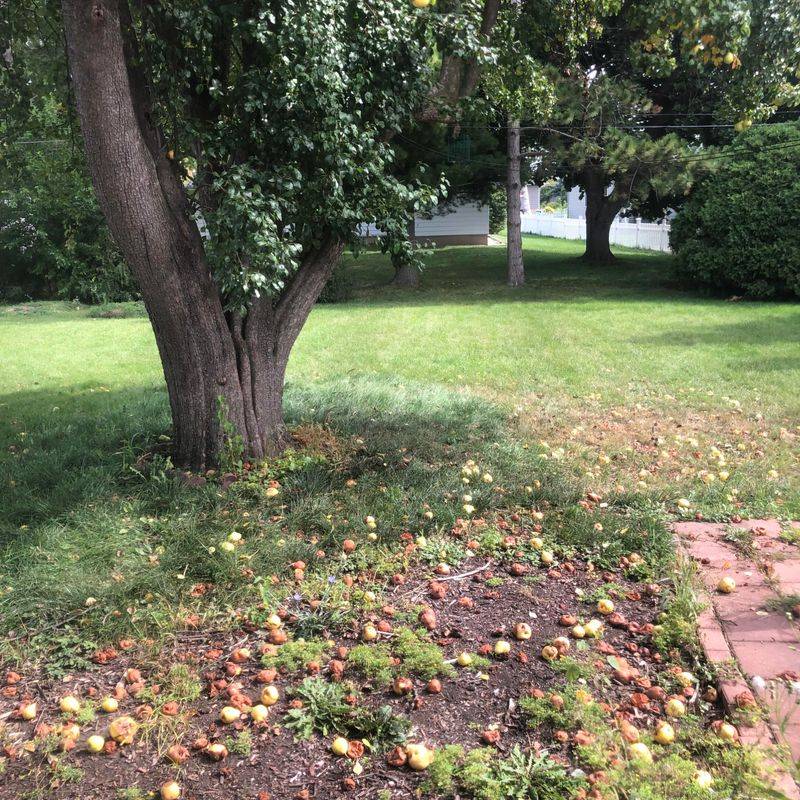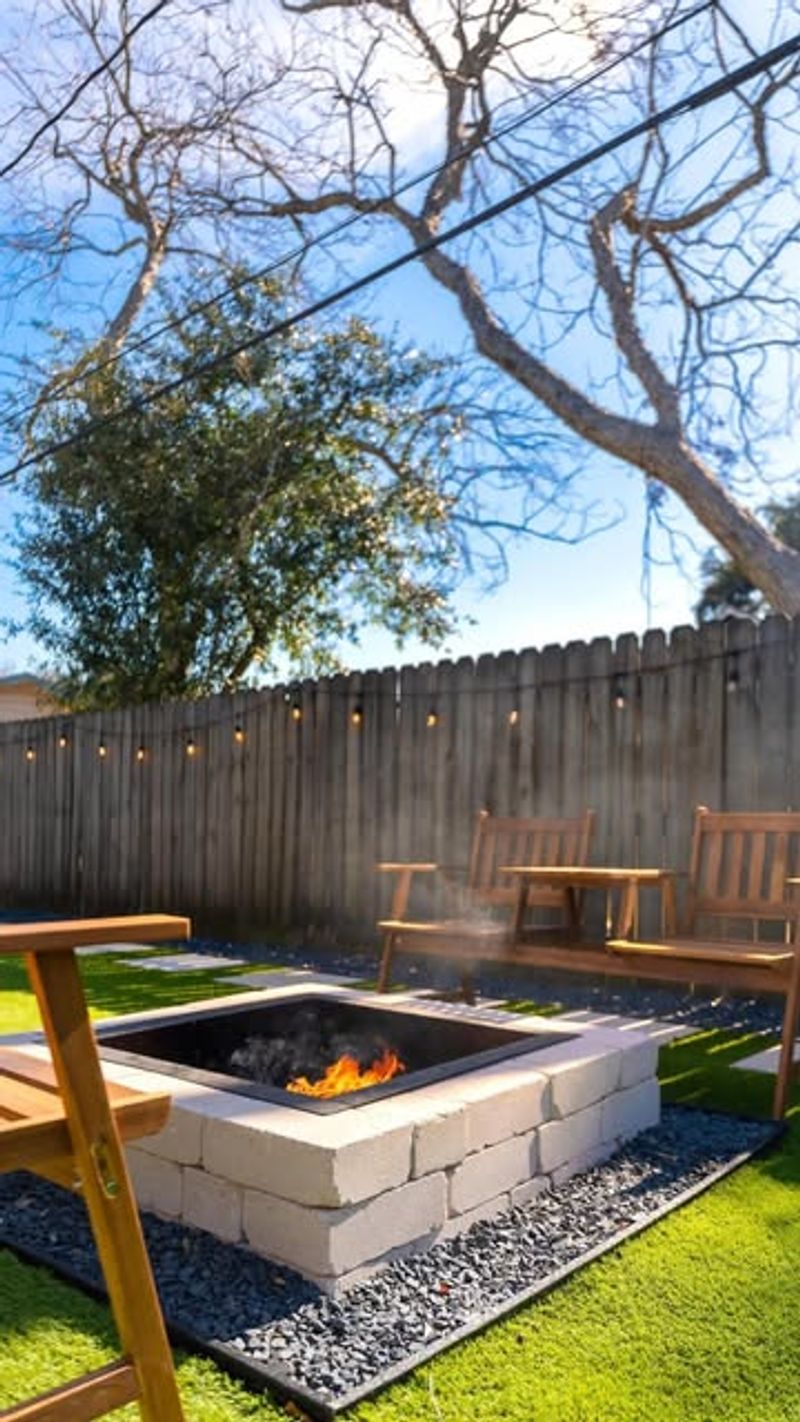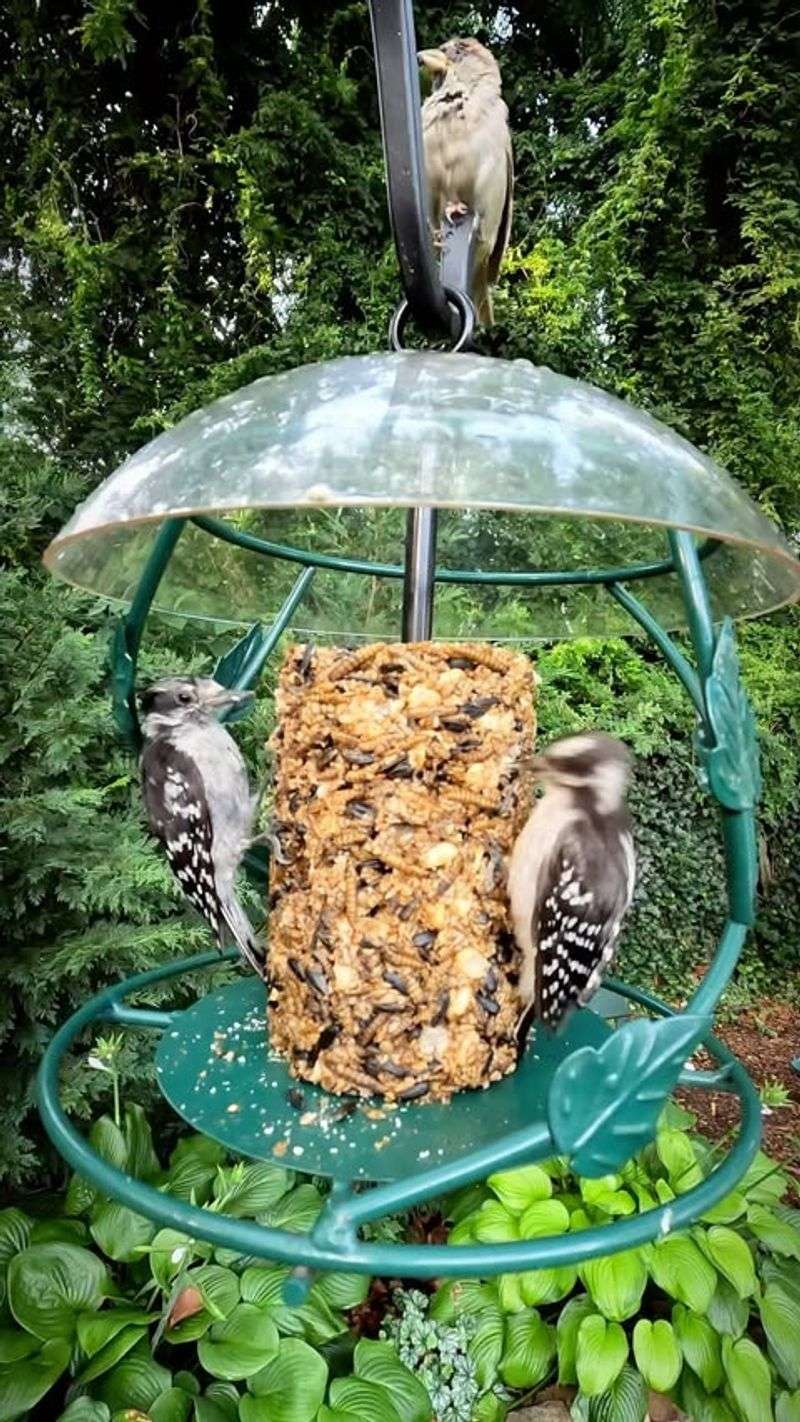A beautiful yard can make your home look great—but not everyone may agree with your idea of “perfect.” Some landscaping choices can quietly (or loudly) bug the people living next door.
Whether it’s the noise, the smell, or something blocking their view, small details can lead to big neighborhood drama. Knowing what to avoid helps keep your yard peaceful and keeps the peace with your neighbors.
1. Overgrown Trees Blocking Views
That majestic oak might provide wonderful shade for your property, but when branches extend over property lines or block scenic views, neighbors start grumbling. Trees that obstruct sunlight can prevent gardens from thriving and reduce natural lighting in nearby homes.
Regular pruning and considerate placement of new trees shows respect for shared spaces. Consider consulting with neighbors before planting varieties that grow extremely tall or wide, especially near property boundaries.
2. Blinding Landscape Lighting
Nighttime illumination adds beauty and security to your yard, but poorly aimed spotlights can shine directly into neighbors’ windows, disrupting sleep and creating unnecessary light pollution. Bright, all-night lighting transforms peaceful evenings into perpetual daylight for those living nearby.
Motion-activated options or timers that turn off at reasonable hours make much better neighbors. Downward-facing lights and proper shields prevent light from spilling where it doesn’t belong.
3. Noisy Water Features
The constant splashing and gurgling from your backyard waterfall might sound peaceful to you but can drive neighbors crazy, especially during quiet evenings. Pumps running all night create a persistent background noise that penetrates open windows and outdoor spaces.
Water features with variable speed pumps allow for volume control when needed. Installing them away from shared property lines shows consideration. A timer that silences the feature during nighttime hours can preserve neighborhood tranquility.
4. Unruly Compost Piles
Composting benefits gardens and reduces waste, but neglected piles near property lines create unpleasant odors that waft into neighboring yards. Exposed food scraps attract pests like rats, raccoons, and flies that don’t respect property boundaries.
Proper compost management includes regular turning and covering food scraps with brown materials. Enclosed bins contain smells and keep animals out. Positioning your compost station away from property lines prevents odors from becoming a neighborhood issue.
5. Towering Privacy Structures
Seeking seclusion in your backyard is understandable, but erecting massive privacy walls, screens, or tall bamboo plantings can feel hostile to neighbors. These imposing barriers create shadows, block breezes, and dramatically alter the neighborhood’s open feeling.
Lower privacy solutions like strategic shrub placement often achieve the same goal without the fortress effect. Discussing plans with neighbors before installation can prevent resentment. Semi-transparent options like lattice topped fences maintain privacy while preserving light and airflow.
6. Invasive Plant Species
That beautiful flowering vine or ornamental grass might look stunning in your landscape design, but invasive species don’t stay put. Plants like English ivy, bamboo, or mint send runners under fences, invading neighboring gardens and creating maintenance nightmares.
Research plants before adding them to your landscape. Using root barriers for spreading species shows consideration. Native alternatives typically offer similar aesthetic benefits without the aggressive spreading habits that frustrate neighbors.
7. Unsecured Yard Art and Decorations
Wind chimes jingling at all hours, flags flapping loudly in the breeze, or lightweight decorations that blow into neighboring yards during storms create ongoing irritation. Reflective ornaments can create blinding glare when they catch the sun at certain angles.
Securing decorations properly prevents them from becoming airborne nuisances. Being mindful about placement of noisy elements away from neighbors’ bedrooms shows consideration. Removing seasonal decorations promptly rather than letting them deteriorate maintains neighborhood aesthetics.
8. Neglected Swimming Pools
A poorly maintained pool quickly transforms from neighborhood envy to eyesore. Stagnant water breeds mosquitoes that affect everyone nearby, while algae-filled pools emit unpleasant odors and damage neighborhood property values.
Regular maintenance prevents pools from becoming breeding grounds for pests. Proper chemical treatment keeps odors at bay. If maintaining your pool becomes overwhelming, consider professional services or converting it to another landscape feature rather than letting it deteriorate.
9. Unrestrained Vegetable Gardens
Growing your own food is admirable, but sprawling, untamed vegetable gardens can quickly look like abandoned lots. Tall crops like corn or sunflowers cast shadows over neighboring properties. Rotting fallen fruits attract pests and create unpleasant odors.
Containing vegetables within defined beds creates a more intentional appearance. Trellising vining plants keeps them from sprawling across property lines. Harvesting regularly and cleaning up fallen produce prevents pest problems that affect the entire neighborhood.
10. Intrusive Security Cameras
Home security matters, but cameras positioned to capture more of your neighbor’s property than your own cross privacy boundaries. Nobody wants to feel monitored while relaxing in their own backyard or opening their curtains.
Angling cameras to focus exclusively on your property respects neighbors’ privacy. Discussing camera placement before installation prevents misunderstandings. Modern systems allow for creating privacy zones that block recording of sensitive areas like neighbors’ windows or outdoor living spaces.
11. Early Morning Lawn Equipment
Maintaining your yard shows pride in your property, but firing up the lawn mower or leaf blower at dawn on weekends shatters neighborhood tranquility. The jarring noise of power equipment interrupts precious sleeping hours and outdoor relaxation time.
Waiting until reasonable hours (typically after 9 AM on weekends) shows consideration for neighbors’ rest. Electric equipment generally runs quieter than gas-powered alternatives. Scheduling regular maintenance during weekday afternoons when fewer people are home minimizes disruption.
12. Unkempt Hedges and Shrubs
Overgrown hedges don’t just look messy – they encroach on sidewalks, block sightlines at driveways, and create hiding places for pests. When branches extend across property lines, they force neighbors to either trim your plants or live with the intrusion.
Regular pruning keeps greenery contained and looking intentional. Following the natural growth pattern of plants when trimming creates healthier, more attractive results. Choosing appropriate plant varieties for the available space prevents future encroachment problems.
13. Chemical Overspray
Maintaining a perfect lawn sometimes involves fertilizers, herbicides, and pesticides. When these chemicals drift onto neighboring properties, they damage plants that weren’t targeted and potentially expose people and pets to unwanted substances.
Applying treatments on calm days prevents wind drift. Creating buffer zones near property lines reduces chemical migration. Exploring organic alternatives demonstrates respect for neighbors who may have different views on lawn chemicals or health concerns about exposure.
14. Drainage Problems
Changing your yard’s grading or adding impermeable surfaces like patios can redirect rainwater straight into neighboring properties. What starts as your landscape improvement becomes their flooded basement or eroded garden beds.
Proper drainage planning should include consideration of where water will go during heavy rains. Rain gardens and permeable paving help manage runoff on-site. Working with neighbors when making significant changes that affect watershed patterns prevents costly conflicts and property damage.
15. Constantly Running Sprinklers
Automated irrigation keeps plants healthy but can frustrate neighbors when systems run during their outdoor gatherings or spray onto adjacent properties. Malfunctioning sprinklers that create sidewalk puddles or run during rainstorms waste water and appear careless.
Smart controllers that adjust to weather conditions prevent unnecessary watering. Properly aimed sprinkler heads keep water on your plants, not your neighbor’s patio. Regular system checks identify leaks or misaligned heads before they become neighborhood irritants.
16. Excessive Wind Chimes
One small wind chime creates gentle melody; a collection produces constant noise that penetrates closed windows and disrupts sleep. What sounds peaceful to you might prevent your neighbor from enjoying their outdoor space or getting proper rest.
Limiting chimes to areas furthest from neighbors’ bedrooms reduces conflict. Removing them during windy seasons or at night shows consideration. Choosing wooden or bamboo chimes generally creates softer sounds than metal versions, making them less likely to annoy those living nearby.
17. Fruit Trees Near Property Lines
Fruit trees provide wonderful harvests but create significant maintenance issues for neighbors. Fallen fruit attracts wasps, rodents, and other pests while creating slip hazards and unpleasant odors when left to rot on the ground.
Positioning fruit trees away from property lines prevents most conflicts. Regular harvesting and cleanup of fallen fruit demonstrates responsibility. Offering to share the bounty with affected neighbors sometimes transforms a potential irritant into a welcome neighborhood benefit.
18. Fire Pits in Small Yards
Evening fires create wonderful ambiance but place them too close to property lines and smoke drifts directly into neighbors’ open windows. The persistent smell permeates clothing, furniture, and curtains while potentially aggravating respiratory conditions.
Positioning fire features away from property lines and considering prevailing wind patterns reduces smoke issues. Using properly seasoned wood produces less smoke than green materials. Being responsive when neighbors express concerns about smoke intrusion maintains positive relationships.
19. Backyard Bird Feeding Stations
Attracting birds brings nature closer but creates unintended consequences when feeders hang near property lines. Seed hulls and bird droppings rain down on neighbors’ patios and vehicles, while scattered seed attracts rodents that affect everyone nearby.
Positioning feeders away from boundaries and over soil rather than hardscapes reduces mess. Seed catchers prevent hulls from scattering widely. Using no-waste seed blends (without fillers birds typically discard) significantly reduces the debris that might affect neighboring properties.

